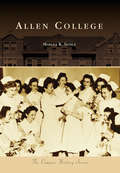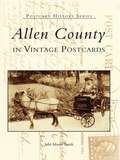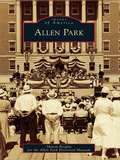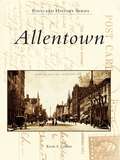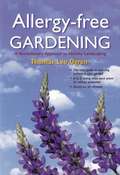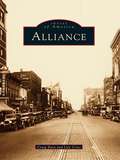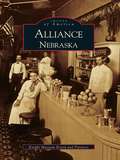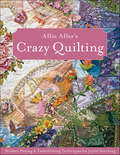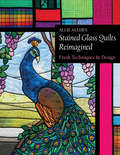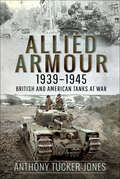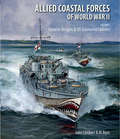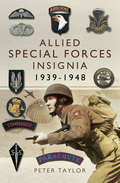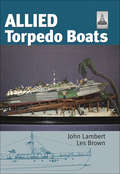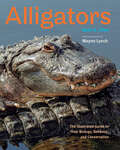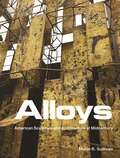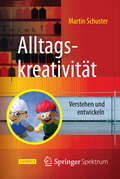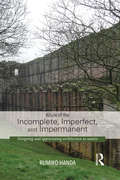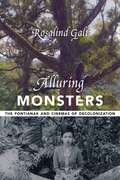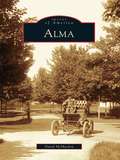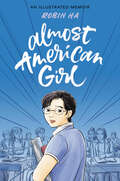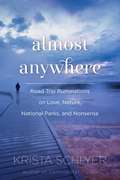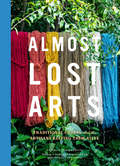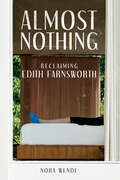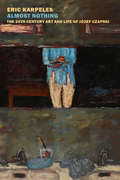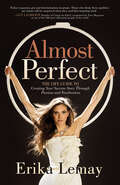- Table View
- List View
Allen College (Campus History)
by Marcea K. SeibleIn the early 1920s, Waterloo businessman Henry B. Allen donated $200,000 and 80 acres of land to the Allen Memorial Hospital Association to establish a hospital in memory of Mary, his wife. The hospital opened in 1925 and was operated by the Deaconess Hospital Association of the Evangelical Church. The School of Nursing was founded in 1925, but a lack of resources during the Depression forced the hospital into receivership and the school was closed. Hospital management was assumed by the Lutheran Good Samaritan Society in 1938, and the school reopened in 1942 as the Allen Memorial Hospital Lutheran School of Nursing. In 1989, the school became Allen College of Nursing, a degree-granting institution. Today, as Allen College–UnityPoint Health, it offers an associate degree in radiography; bachelor of science degree in nursing; bachelor of health science degree with majors in diagnostic medical sonography, nuclear medicine technology, medical laboratory science, public health, and dental hygiene; master of science degrees in nursing and occupational therapy; and two doctoral degrees in health professions education and nursing practice. Throughout its 90-year history, Allen College has remained faithful in its mission to prepare health care professionals for their roles in society.
Allen County in Vintage Postcards (Postcard History Series)
by John Martin SmithThe fleeting scenes of Robison Park, Cathedral Square, and Fort Wayne's many parks have often been captured in postcards sent or collected by Allen County's residents and visitors. Captured here in over 200 vintage postcards and images is the history of Allen County, chosen by local merchants, depicting the thriving downtown areas, booming industries, and quiet, pleasant residential sections.Allen County provides a visual 40-year history of Allen County. This vast collection provides a wide range of fascinating images and poignant messages preserved on 1¢ postcards, including the socials, events, buildings, homes, and residents of the past from the towns of Allen County, including Churubusco, Fort Wayne, Grabill, Huntertown, New Haven, Monroeville and Zanesville.
Allen Park
by Allen Park Historical Museum Sharon BroglinAllen Park's history begins when Native Americans hunted, fished, and paddled their canoes along the banks of Ecorse Creek. The French were among the earliest settlers, and after the land was cleared, German farmers arrived. Ecorse Township, known today as Downriver, was divided into seven different cities, and Allen Park was born. Once characterized as a "lazy, farming hamlet," Allen Park's residents were the most influential in developing the Village of Allen Park out of Ecorse Township, in 1927, and worked to become the City of Allen Park in 1957. Henry Ford's $5 workday prompted many farmers to sell to developers and go to work for Ford. Hungarians, Poles, Italians, and Armenians moved in, becoming the major ethnic groups within the community. Among the city's celebrities there have been writers, radio and sports personalities, cartoonists, and fashion designers. Towering over the Interstate 94 corridor in Allen Park, the Uniroyal Giant Tire has become an American icon, and although the Veterans Administration medical center is gone, it will forever live in residents' hearts. Enjoy the city's story, gathered from the files of the Allen Park Historical Museum.
Allentown (Postcard History Series)
by Kevin S. GildnerAllentown is many things to many different people. It is a historical city, a city of churches, a city of immigrants, and a place that values hard work, education, and recreation. This is a city with rich and unique stories to tell. Allentown captures historical stories such as the hiding of the Liberty Bell, early railroad and canal transportation, and the training of World War I ambulance drivers. Other stories include how politics influenced the building of a world-class park system. This rare collection of postcards depicts how the people of Allentown shaped the city into their idea of the American dream.
Allergy-Free Gardening
by Thomas L. OgrenWith allergy problems reaching epidemic levels, horticulturist Tom Ogren set out to investigate the role that urban landscaping plays in this health crisis. What he discovered was startling: The vastly disproportionate cultivation of all-male plant varieties produces large amounts of intensely irritating airborne pollen. This extensively researched reference helps gardeners and landscapers make landscaping choices that can drastically reduce their exposure to harmful allergens.
Alliance (Images of America)
by Lyle Crist Craig BaraAccording to local history, General Robinson, a railroad official from Pittsburgh, Pennsylvania, named this Ohio town "Alliance" in 1850. Known for a short time as "The Crossing," Robinson believed that Alliance was a better name since the nation's two major railroads intersected here. The name stuck, and in 1854, the communities of Williamsport, Freedom, and Liberty incorporated as the town of Alliance. In 1889, the Village of Mount Union was annexed and Alliance became a city. Not only did therailroads help form our community, they established Alliance as a city of industry. Even though the town has remained relatively small, with approximately 23,000 citizens in 1990, industry has played a vital role in the development of Alliance. Many citizensattribute the strong leadership of the town's governing body to its industrial growth. This pictorial compilation documents the growth of the railroad and the stores and factories located along these railroad routes. Even today, the availabilityof trains and the intersection of key lines in Alliance is important to manufacturers.
Alliance, Nebraska (Images of America)
by Knight Museum Board and PartnersOnce heralded as the "Queen City of the Plains,"Alliance, Nebraska originated as a simple railroadjunction called Grand Lake. Founded on true pioneerspirit in 1887, Alliance has grown from a farm and ranchcommunity into a major retail center for Box Butte County.The Knight Museum showcases over 200 images in this newbook, depicting the history and growth of Alliance during its113-year history.Although there are many anonymous threads that makeup the social fabric of Alliance, readers will recognize themore familiar faces of the Newberry family, Dr. Frank Knight,Miss Susan Frazier, and Miss Katherine Schill. While somelandmarks are gone forever, such as the depot and the CoorsBuilding, many timeless photographs remain to guide thereader down the main street of Alliance's rich history. Fromthe vintage image of the county courthouse to the beautyof western Nebraska's largest park system, readers will get aglimpse of the pioneering spirit that is still so abundant.
Allie Aller's Crazy Quilting: Modern Piecing & Embellishing Techniques for Joyful Stitching
by Allie AllerWelcome to the "new" crazy! • Jump into crazy quilting with seven enticing projects that include small quilts, a needle cushion, and a softie • Learn four different crazy piecing methods • Try creative techniques on fabric, such as stenciling, photo-transfer, and Angelina fiber effects • Discover how to add beauty and dimension to your work with embellishments like 3-D ribbon flowers, embroidery, beads, and painted lace • Follow along with a step-by-step photo guide that takes you from cutting to piecing to binding Allie shows you how to make crazy quilting more contemporary with an array of easy-to-master techniques. You'll learn how to combine traditional methods with modern fabric tricks. The photo gallery reveals just how fun crazy quilting can be -and anyone can do it.
Allie Aller's Stained Glass Quilts Reimagined: Fresh Techniques & Design
by Allie AllerThe author of Crazy Quilting shares new techniques for capturing the style of stained glass in cozy quilts, bedcovers, wallhangings, and more.Quilt designer Allie Aller spent years developing her own techniques for mimicking the look of stained glass. Surprisingly simple and endlessly inspiring, her methods produce stunningly beautiful results. In Allie Aller’s Stained Glass Quilts, she shares her secrets—from design sources and strategies to step-by-step instruction in various “glass and leading” techniques. Allie also includes six stained glass style quilt projects to get you started.
Allied Armour, 1939–1945: British and American Tanks at War
by Anthony Tucker-Jones“An important review of armoured warfare, armoured vehicle design, tactics, and operational issues during World War 2 . . . it comes highly commended.” —Dr Stuart C. Blank, Military Archive ResearchDuring the first years of the Second World War, Allied forces endured a series of terrible defeats at the hands of the Germans, Italians and Japanese. Their tanks were outclassed, their armored tactics were flawed. But the advent of new tank designs and variants, especially those from the United States, turned the tables. Although German armor was arguably still superior at the end of the war, the competence of Allied designs and the sheer scale of their production gave them a decisive advantage on the armored battlefield. This is the fascinating story that Anthony Tucker-Jones tells in this book which is part of a three-volume history of armored warfare during the Second World War.Chapters cover each major phase of the conflict, from the early blitzkrieg years when Hitler’s Panzers overran Poland, France and great swathes of the Soviet Union to the Allied fight back in tank battles in North Africa, Italy and northern Europe. He also covers less-well-known aspects of the armored struggle in sections on Allied tanks in Burma, India and during the Pacific campaign. Technical and design armored are a key element in the story, but so are changes in tactics and the role of the tanks in the integrated all-arms forces that overwhelmed the Axis.“The matter of armoured vehicles and their role in the turning of the tide against Germany is covered brilliantly in Anthony Tucker-Jones’s excellent treatise.” —Books Monthly“Very Highly Recommended.” —Firetrench
Allied Coastal Forces of World War II: Fairmile Designs & US Submarine Chasers
by John Lambert Al RossThe major contribution made by Coastal Forces to the Allied war effort has had surprisingly little coverage in the literature of the Second World War. Motor torpedo boats, PT boats, motor gunboats, launches and submarine chasers served with distinction throughout the War, and in every theatre. They performed invaluable service as patrol boats, convoy escorts, minelayers and minesweepers, harbour defence vessels, light landing craft, RAF rescue boats and transports for agents and clandestine missions.Allied Coastal Forces, now a recognised classic work and first published in 1990, remains the only publication to deal comprehensively in words, photographs and drawings with the technical detail of all these boats. Design, construction and subsequent development are all covered, and the builders, construction lists, fates and the technical data are given for each type. Separate sections cover armament and equipment, sea-going qualities and habitability.This first volume covers all the designs of the Fairmile Marine Company (including those craft built and equipped for Canada), together with the 72ft Harbour Defence Motor Launch and the US Navy 110ft subchaser.The authors, firmly established as the recognised authorities on small warships, unearthed a remarkable body of information now included in this major work, and their finely detailed drawings, redrawn form original builders plans, offer an unparalleled view of all these remarkable designs. The new editions of their work will be welcomed by naval enthusiasts and modellers alike.
Allied Special Forces Insignia, 1939–1948: 1939-1948
by Peter TaylorAs early as 1940 political leaders and military commanders responsible for the conduct of the Allied operations relalised that, after a string of disastrous setbacks, national morale could only be restored by taking offensive action against the enemy. With the limited resources available Churchills stirring call to set Europe ablaze called for unconventional solutions and action.From these uncertain beginnings was born a plethora of Allied Special Force units. Inevitably some are household names but others are little known, having had brief and covert existences in far flung parts of the world.rnrnAll, however, had distinctive identities and their proudly worn insignia represent a fascinating and often elusive challenge for militaria collectors. This is due, not just to the scarcity of items in many cases, but to the mystery of their origin; a number of these units were established on an ad hoc and spontaneous basis.Peter Taylors aim in compiling Allied Special Forces Insignia 1939–1948 is to fill a gap in the growing bibliography of militaria collecting. At the same time, Brigadier Bryan Watkins introduction sets in context the growth and development of Allied Special Forces during the global conflict 1939-45.Lavishly illustrated, this work will prove an essential reference work and companion guide for the expert collector and all interested in military history.
Allied Torpedo Boats: Allied Torpedo Boats (ShipCraft)
by John Lambert Les Brown&“An inspirational/enjoyable book with excellent representations of a wide variety of [Motor Torpedo Boats] by various modelers in a variety of scales.&”—ModelGeek The ShipCraft series provides in-depth information about building and modifying model kits of famous warship types. Lavishly illustrated, each book takes the modeler through a brief history of the subject class, highlighting differences between sisterships and changes in their appearance over their careers. This includes paint schemes and camouflage, featuring color profiles and highly detailed line drawings and scale plans. The modeling section reviews the strengths and weaknesses of available kits, lists commercial accessory sets for super-detailing of the ships, and provides hints on modifying and improving the basic kit. This is followed by an extensive photographic gallery of selected high-quality models in a variety of scales, and the book concludes with a section on research references—books, monographs, large-scale plans and relevant websites. This volume follows the format of the highly successful Flower Class Corvettes where the extent has been doubled to include far more detailed drawings of the many different designs of British MTBs and US PT-boats, including their fittings, sensors and weapons. &“The content is packed with information that makes you want to turn a page, from the history of torpedo boats from 1915-1945, which then goes on to model products, showcase, construction, aftermarket products for scales 1-1200 to 1-100 . . . Not only a reference to torpedo boats, but a wonderful guide to building and getting the best out of a model.&”—AutoModeler
Alligators: The Illustrated Guide to Their Biology, Behavior, and Conservation
by Kent A. VlietThe ultimate guide to understanding the biology and behavior of the amazing and underappreciated American alligator.Few scenes put the senses on edge more than a submerged alligator, only eyes and snout showing, when peering across a southern lake on a misty morning. An iconic American predator, these reptiles grow to thirteen feet or more and can live as long as humans. Alligators are complex creatures, capable of terrific attacks and yet tending to their young in the same gentle way a mother duck looks after her brood. Once extremely numerous, alligators came close to extinction in the twentieth century, but thanks to conservation efforts have since made a comeback, reclaiming their rightful place as the monarchs of the southern wetlands.In this fascinating account, richly illustrated with more than 150 photographs from award-winning wildlife photographer Wayne Lynch, expert zoologist Kent A. Vliet introduces readers to the biology, ecology, and natural history of the American alligator. Sharing nuanced depictions of their hidden lives that will forever change the way you think of these giant reptiles, the book• combines captivating storytelling with the most current scientific facts• chronicles the life cycle of the alligator• explains why the alligator's precise anatomy and physiology make it so successful• covers a wide range of topics, from courtship and reproduction to communication, basking, nest-building, and hunting• reveals the alligator's sophisticated social life in detail• evaluates the alligator's environmental role as a keystone species• examines the complicated relationship between alligators and people
Alloys: American Sculpture and Architecture at Midcentury
by Marin R. SullivanA new look at the interrelationship of architecture and sculpture during one of the richest periods of American modern designAlloys looks at a unique period of synergy and exchange in the postwar United States, when sculpture profoundly shaped architecture, and vice versa. Leading architects such as Gordon Bunshaft and Eero Saarinen turned to sculptors including Harry Bertoia, Alexander Calder, Richard Lippold, and Isamu Noguchi to produce site-determined, large-scale sculptures tailored for their buildings’ highly visible and well-traversed threshold spaces. The parameters of these spaces—atriums, lobbies, plazas, and entryways—led to various designs like sculptural walls, ceilings, and screens that not only embraced new industrial materials and processes, but also demonstrated art’s ability to merge with lived architectural spaces.Marin Sullivan argues that these sculptural commissions represent an alternate history of midcentury American art. Rather than singular masterworks by lone geniuses, some of the era’s most notable spaces—Philip Johnson’s Four Seasons Restaurant in Mies van der Rohe’s Seagram Building, Max Abramovitz’s Philharmonic Hall at Lincoln Center, and Pietro Belluschi and Walter Gropius’s Pan Am Building—would be diminished without the collaborative efforts of architects and artists. At the same time, the artistic creations within these spaces could not exist anywhere else. Sullivan shows that the principle of synergy provides an ideal framework to assess this pronounced relationship between sculpture and architecture. She also explores the afterlives of these postwar commissions in the decades since their construction.A fresh consideration of sculpture’s relationship to architectural design and functionality following World War II, Alloys highlights the affinities between the two fields and the ways their connections remain with us today.
Alltagskreativität: Verstehen und entwickeln
by Martin SchusterDieses Werk ermutigt Sie dazu, Ihre eigene Kreativität zu entdecken und zu entfalten. Basierend auf den Erkenntnissen der Kreativitätsforschung zeigt Ihnen der Autor auf, dass nicht nur geniale Erï¬ nder und Entdecker kreativ und bedeutsam für unsere Kulturentwicklung sind. Ein jeder kann die eigene Kreativität im Rahmen der Alltagskreativität weiter entwickeln. Erfahren Sie am Beispiel von Erfindern und Entdeckern wie Ideen entstehen und was das kreative Werk begünstigt. Diese inspirierende Anregung wird durch praktische Übungen ergänzt, die Ihnen helfen, neue Schritte zu wagen und sich auf eine Entdeckungsreise zu begeben.
Allure of the Incomplete, Imperfect, and Impermanent: Designing and Appreciating Architecture as Nature
by Rumiko HandaArchitects have long operated based on the assumption that a building is 'complete' once construction has finished. Striving to create a perfect building, they wish for it to stay in its original state indefinitely, viewing any subsequent alterations as unintended effects or the results of degeneration. The ideal is for a piece of architecture to remain permanently perfect and complete. This contrasts sharply with reality where changes take place as people move in, requirements change, events happen, and building materials are subject to wear and tear. Rumiko Handa argues it is time to correct this imbalance. Using examples ranging from the Roman Coliseum to Japanese tea rooms, she draws attention to an area that is usually ignored: the allure of incomplete, imperfect and impermanent architecture. By focusing on what happens to buildings after they are ‘complete’, she shows that the ‘afterlife’ is in fact the very ‘life’ of a building. However, the book goes beyond theoretical debate. Addressing professionals as well as architecture students and educators, it persuades architects of the necessity to anticipate possible future changes and to incorporate these into their original designs.
Alluring Monsters: The Pontianak and Cinemas of Decolonization (Film and Culture Series)
by Rosalind GaltThe pontianak, a terrifying female vampire ghost, is a powerful figure in Malay cultures, as loved and feared in Southeast Asia as Dracula is in the West. In animist tradition, she is a woman who has died in childbirth, and her vengeful return upsets gender norms and social hierarchies. The pontianak first appeared on screen in late colonial Singapore in a series of popular films that combine indigenous animism and transnational production with the cultural and political force of the horror genre.In Alluring Monsters, Rosalind Galt explores how and why the pontianak found new life in postcolonial Southeast Asian film and society. She argues that the figure speaks to a series of intersecting anxieties: about femininity and modernity, globalization and indigeneity, racial and national identities, the relationship of Islam to animism, and heritage and environmental destruction. The pontianak offers abundant feminist potential, but her disruptive gender politics also unsettle queer and feminist film theories by putting them in dialogue with Malay epistemologies. Reading the pontianak as a precolonial figure of disturbance within postcolonial cultures, Galt reveals the importance of cinema to histories and theories of decolonization. From the horror films made by Cathay Keris and Shaw Studios in the 1950s and 1960s to contemporary film, television, art, and fiction in Malaysia and Singapore, the pontianak in all her media forms sheds light on how postcolonial identities are both developed and contested. In tracing the entanglements of Malay feminist animisms with postcolonial visual cultures, Alluring Monsters reveals how a “pontianak theory” can reshape understandings of anticolonial aesthetics and world cinema.
Alma
by David McmackenRalph Ely, founder of Alma, selected 10 acres of old forest on the bank of the Pine River in 1853. In this central-Michigan wilderness, he built a log cabin, a log store, and two steam-powered mills--a sawmill and a gristmill. At first, his growing settlement was called Elyton, but within a few years, it was renamed Alma, memorializing a battle in the Crimean War. Alma was energized by the acquisition of millionaire lumberman and entrepreneur Ammi W. Wright, who poured his resources into the town. Wright encouraged the establishment of Alma College in 1886 and the state Masonic home for the elderly in 1911. Wright laid the foundations for Alma's great Republic Truck Company, the largest exclusive maker of trucks in the world by 1920. The discovery of several oil fields prompted the establishment of two oil refineries in Alma in the 1930s and saved the town from the doldrums of the Great Depression. By the 1950s, Alma was a key national manufacturer of house trailers and mobile homes. This photographic panorama reflects the city's economic cycles and its institutions that have given Alma an enviable stability through the years.
Almost American Girl: An Illustrated Memoir
by Robin HaHarvey Award Nominee, Best Children or Young Adult Book A powerful and moving teen graphic novel memoir about immigration, belonging, and how arts can save a life—perfect for fans of American Born Chinese and Hey, Kiddo. <p><p>For as long as she can remember, it’s been Robin and her mom against the world. Growing up as the only child of a single mother in Seoul, Korea, wasn’t always easy, but it has bonded them fiercely together. So when a vacation to visit friends in Huntsville, Alabama, unexpectedly becomes a permanent relocation—following her mother’s announcement that she’s getting married—Robin is devastated. <p><p>Overnight, her life changes. She is dropped into a new school where she doesn’t understand the language and struggles to keep up. She is completely cut off from her friends in Seoul and has no access to her beloved comics. At home, she doesn’t fit in with her new stepfamily, and worst of all, she is furious with the one person she is closest to—her mother. Then one day Robin’s mother enrolls her in a local comic drawing class, which opens the window to a future Robin could never have imagined. <p><p>This nonfiction graphic novel with four starred reviews is an excellent choice for teens and also accelerated tween readers, both for independent reading and units on immigration, memoirs, and the search for identity. <P><P><i>Advisory: Bookshare has learned that this book offers only partial accessibility. We have kept it in the collection because it is useful for some of our members. Benetech is actively working on projects to improve accessibility issues such as these.</i>
Almost Anywhere: Road Trip Ruminations on Love, Nature, National Parks, and Nonsense
by Krista SchlyerWhat do you do when your world ends? At twenty-eight years old, Krista Schlyer sold almost everything she owned and packed the rest of it in a station wagon bound for the American wild. Her two best friends joined her--one a grumpy, grieving introvert, the other a feisty dog--and together they sought out every national park, historic site, forest, and wilderness they could get to before their money ran out or their minds gave in. The journey began as a desperate escape from urban isolation, heartbreak, and despair, but became an adventure beyond imagining. Chronicling their colorful escapade, Almost Anywhere explores the courage, cowardice, and heroics that live in all of us, as well as the life of nature and the nature of life. This eloquent and accessible memoir is at once an immersion in the pain of losing someone particularly close and especially young and a healing journey of a broken life given over to the whimsy and humor of living on the road.
Almost Lost Arts: Traditional Crafts and the Artisans Keeping Them Alive
by Emily FreidenrichThis book is a celebration of tactile beauty and a tribute to human ingenuity. In-depth profiles tell the stories of 20 artisans who have devoted their lives to preserving traditional techniques. Gorgeous photographs reveal these craftspeople's studios, from Oaxaca to Kyoto and from Milan to Tennessee. Two essays explore the challenges and rewards of engaging deeply with the past. With an elegant three-piece case and foil stamping, this rich volume will be an inspiration to makers, collectors, and history lovers.
Almost Nothing: Reclaiming Edith Farnsworth
by Nora WendlThe iconic Edith Farnsworth House is a singular glass home designed by Mies van der Rohe. But the oft-told history of the house overwrites Farnsworth’s role as Mies’s collaborator and antagonist while falsely portraying her as the architect’s angry ex-lover. Nora Wendl’s audacious work of creative nonfiction explodes the sex-and-real-estate myth surrounding the Edith Farnsworth House and its two central figures. An eminent physician and woman of letters, Farnsworth left a rich trove of correspondence, memoirs, and photographs that Wendl uses to reconstruct her voice. Farnsworth’s memories and experiences alternate with Wendl’s thoughts on topics like misogyny and professional ambition to fashion a lyrical examination of love, loneliness, beauty, and the search for the divine. Eloquent and confessional, Almost Nothing restores Edith Farnsworth to her place in architectural history and the masterpiece that bears her name.
Almost Nothing: The 20th Century Art And Life Of Józef Czapski
by Eric KarpelesA compelling biography of the Polish painter and writer Józef Czapski that takes readers to Paris in the Roaring Twenties, to the front lines during WWII, and into the late 20th-century art world.Józef Czapski (1896–1993) lived many lives during his ninety-six years. He was a student in Saint Petersburg during the Russian Revolution and a painter in Paris in the roaring twenties. As a Polish reserve officer fighting against the invading Nazis in the opening weeks of the Second World War, he was taken prisoner by the Soviets. For reasons unknown to this day, he was one of the very few excluded from Stalin’s sanctioned massacres of Polish officers. He never returned to Poland after the war, but worked tirelessly in Paris to keep alive awareness of the plight of his homeland, overrun by totalitarian powers. Czapski was a towering public figure, but painting gave meaning to his life. Eric Karpeles, also a painter, reveals Czapski’s full complexity, pulling together all the threads of this remarkable life.
Almost Perfect: The Life Guide to Creating Your Success Story Through Passion and Fearlessness
by Erika LemayThrough Almost Perfect, Erika Lemay shares how she became world-famous by creating a career out of her passion — the acrobatic world of Physical Poetry. The gritty detail of a life in the spotlight is exposed — rebuilding herself after a fall that left one of her limbs compromised and challenged all she had aspired to be, avoiding child abusers in the show business world, and keeping her cool when the unpredictable happens 30 metres in the air. More than this, Erika explains the methodology behind her success stories. With precise parameters, tips, and tricks, Almost Perfect is the guide she shares to a pain-free life, which explains how she maintains her physical conditions to Olympic-athlete level, and demonstrates how everyone can achieve the extraordinary — not by magical thinking but by designing a precise set of habits that can open doors to what most think is only accessible to the few. Almost Perfect is ideal for anyone that aspires to exceptional health, an extraordinary life, a head-turning physique, and an enviable career. Erika’s carefully crafted methodology for excelling at specific goals is laid bare for the world to see. Nothing comes for free: a detail-oriented and elite mindset is the key to the most incredible life-changing path. Throughout Almost Perfect, readers learn to be the incarnation of coherence through iron discipline and unshakeable self-worth.
